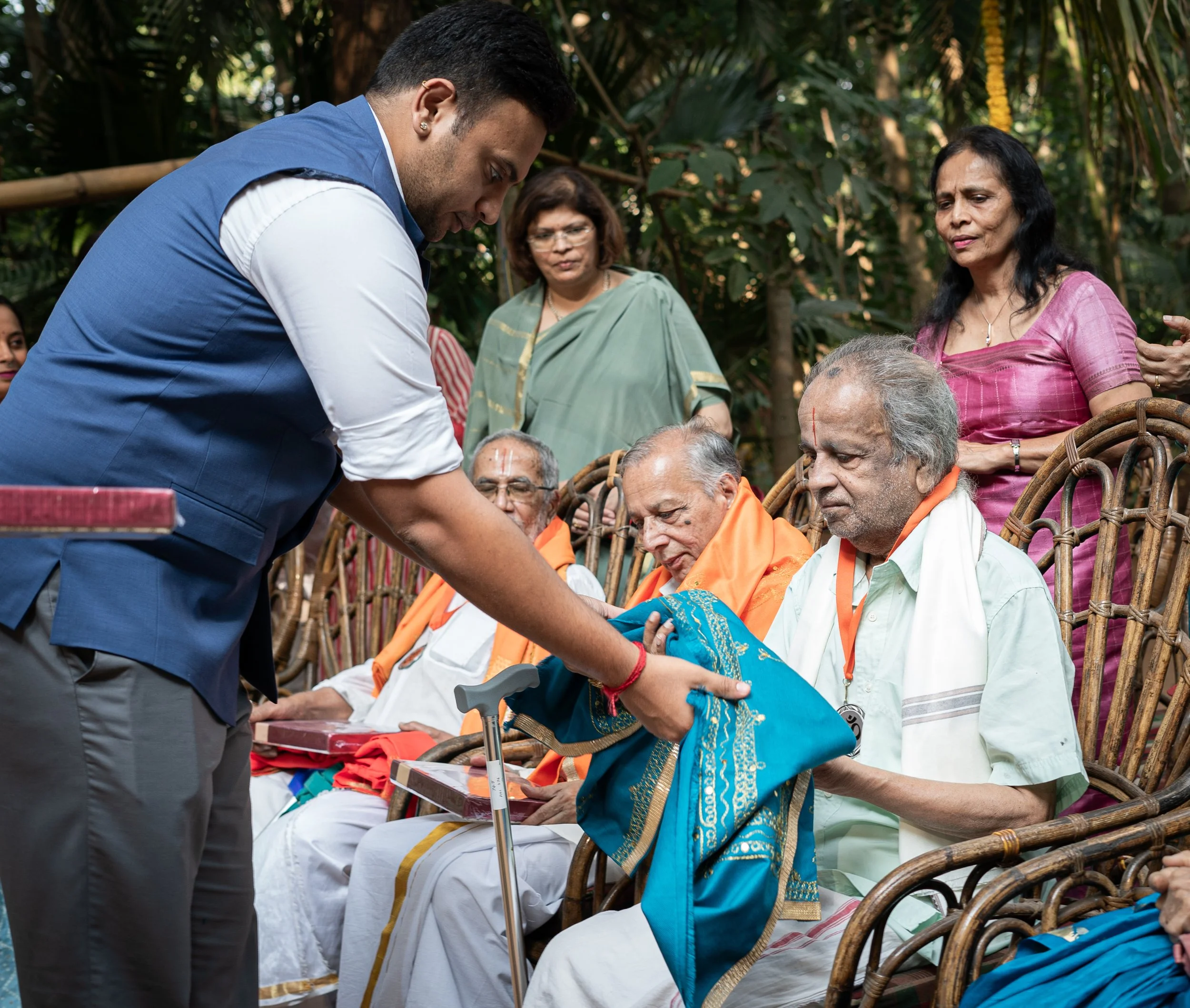Reflections on the Paramacharyas of Sanātana Dharma with Dr. M. A. Narasimhan
The title of this talk may sound grandiose, but my aim is to keep it simple and accessible. Today, I speak about the three great Paramacharyas of Sanātana Dharma—Adi Shankaracharya, Ramanujacharya, and Madhvacharya—who established and standardized Vedānta in its three principal forms: Advaita, Vishishtadvaita, and Dvaita. Each of these Acharyas presented a comprehensive, coherent synthesis of Vedic knowledge that remains both intellectually profound and practically applicable even today.
Unlike Western traditions, where religion and philosophy are often distinct, in the Indian tradition, these are inseparably intertwined. Western 'armchair philosophers' like Spencer may have had great ideas with little practice. In contrast, Indian systems—known as Darshanas—are lived philosophies, validated not only by reason but also by personal experience and transformation.
Darshana means that which is seen or realized. The three Acharyas offered distinct perspectives and methods, but all rooted in the same spiritual reality. Their teachings remain vibrant even after 2,000 years because they address fundamental human questions: How did creation happen? Why are we here? What is the path to liberation?
Before Shankara, Karma Kāṇḍa—the ritualistic dimension of the Vedas—dominated. Mandana Mishra, a proponent of this approach, debated Shankara and eventually became his disciple, adopting the name Sureshwaracharya. Shankara emphasized that philosophy must support and be supported by practice. Dharma is not just a theory but a way of life.
To study this tradition, we must understand the purpose of key declarations like “Aham Brahmāsmi.” Who is the ‘I’? What is Brahman? And what does it mean to ‘be’ Brahman? These questions led to the formation of the six Darshanas—systems designed to interpret Vedic statements in logical, experiential ways. This included linguistics, metaphysics, epistemology, and spiritual practice.
The Indian philosophical tradition recognizes man as the pinnacle of creation—not out of ego, but because humans alone can remember the past, imagine the future, and act meaningfully in the present. We create technologies and systems, but these have limitations. Our greatest technology is the self: a compact, self-contained, conscious being.
Rishis explored both the outer and inner worlds. While material science offered insights, it failed to answer deeper existential questions. The Rishis found that inward exploration revealed bliss and self-sufficiency. Real happiness did not depend on external objects like pizza or sensory pleasures, which are always fleeting.
The soul interacts with matter but is not bound to it. True realization comes when we transcend desires. Rishis discovered that the deepest joy lies within—independent of the material world. This bliss, called ānanda, is continuous and available to all who detach from the senses and realize the Self.
This inward journey starts with self-knowledge. We must understand our limitations. Like the story of the deaf person who realizes their hearing loss through others, we realize our inner limitations through experience and inquiry. The Acharyas gave us tools for this journey—sutras, logic, practice, and structured methods.
Shankara's Advaita Vedānta posits that the world is ultimately unreal (mithyā). Only Brahman is real. Though the world appears real temporarily, it lacks permanence. Therefore, we must pursue the eternal. Brahman is that eternal, and reaching it requires detachment from the transient.
To explain and practice this, Shankara wrote commentaries on three foundational texts—the Brahma Sūtras, Upaniṣads, and the Bhagavad Gītā—collectively known as the Prasthāna Traya. His Advaita does not mean casual non-duality. It must be studied under proper guidance and internalized. The story of the student who mistook an elephant for Brahman illustrates the danger of superficial understanding.
Following Shankara, Rāmānuja presented Vishishtadvaita—qualified non-dualism. While Shankara emphasized illusion, Rāmānuja affirmed the reality of the world as the body of God. He introduced a more devotional approach, seeing God as both immanent and compassionate. Liberation is achieved not by negating the world, but by recognizing the divine within it and surrendering to it.
Madhvacharya, about a century later, taught Dvaita or dualism. He emphasized that the soul, God, and the world are eternally distinct, though related. All beings merge into God at the end of creation and re-emerge during the next. This cyclical vision aligns with Upaniṣadic cosmology. His philosophy, rooted in Karnataka, influenced devotional traditions like that of Chaitanya Mahāprabhu and ISKCON.
Despite their differences, all three Acharyas aimed at the same goal: liberation (mokṣa). The distinctions lie in their approach to metaphysics, not in their commitment to the spiritual journey.
The practical expression of Vedānta is Yoga—especially Aṣṭāṅga Yoga. Through asana and prāṇāyāma, one gains control over the body and mind. Dharana and dhyāna develop mental focus and lead toward samādhi. True detachment is not forced renunciation but natural release, as our taste for lower pleasures fades before higher joy.
Attachment is the root of suffering. Yet, simply avoiding something doesn’t remove desire; only spiritual fulfillment does. Shankara emphasized jñāna (knowledge) to overcome attachment. Rāmānuja emphasized bhakti (devotion). Madhva emphasized distinction and divine grace.
In all cases, the realization that “I am Brahman” or that “I belong to God” leads to liberation. Whether one identifies with Brahman or as a servant of God, the fruit is freedom. Jīvanmukti—liberation while alive—is possible. The liberated one lives in the world, unattached, blissful, and compassionate.
These are not abstract theories. They are lived paths. Yoga becomes the means. Asana and prāṇāyāma prepare the body; dhyāna transforms the mind. When all attachments drop, the soul naturally moves toward the divine.
Ultimately, these three systems form one great river flowing toward the ocean of the Self. Each Acharya gave a unique stream, but the destination is the same.
Realization is the fruit of study, practice, and grace. And as the sages say, shāstra (scripture), sādhanā (practice), and sadguru (a true teacher) are the three legs of that path.
May this wisdom guide us inward. May our attachments dissolve. May we realize the eternal, and dwell in the fullness of the Self.
Om shāntiḥ shāntiḥ shāntiḥ.
If you enjoy this kind of learning please check out our Mysore Yoga Traiditons Online Studies Program
